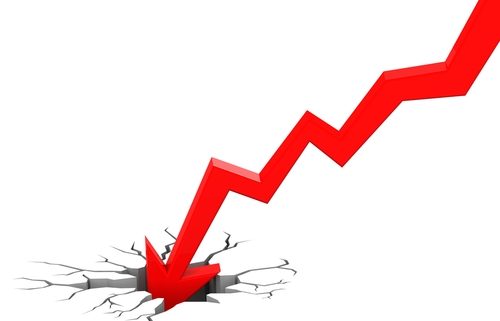What Happens to Your Retirement if the Stock Market Crashes?
One of the most critical questions retirement investors have to face is what to do if the stock market crashes. That’s because that many retirement investors don’t only rely on the stock market for ambitious returns in their portfolio, but because they also have to consider what their retirement timeline is like—and whether they’ll have the stomach to keep their money in stocks while the stock market does not provide the short-term returns they need.
With a Self-Directed IRA, a retirement investor can diversify out of the stock market and have less worry about their retirement portfolio in the event of a crash. But even so, let’s look at what happens to a retirement portfolio in the event of a stock market crash, examining a few different scenarios and portfolio styles.
Scenario #1: Long Timeline, but Heavy on Stocks
For investors who are heavy into stocks—where maybe 90% of their portfolio or more is made up of stocks—there might be worry. But with a long timeline, it’s possible that investors don’t have to make any major moves. For example, a retirement investor who’s already put aside a lot of money toward retirement before the age of 30 has a timeline that goes for decades on end.
Consider what happened during the 2008 stock market crash. Even though the stock market tumbled and investors around the world sold and worried, it eventually recovered. Within several years, those investors who had kept to their strategy would have been right where they started, or better.
Scenario #2: Short Timeline, Heavy on Stocks
One problem with the stock market-only strategy is that there are no guarantees, even when the historical returns of the stock market tend to be high. That’s because the market can go up or down in any given year. It can even go down in the course of five years.
As a Self-Directed IRA administration firm, American IRA cannot tell you whether to sell or not in this scenario, as we do not provide specific investment advice. But we can note that retirement investors who diversify their assets beyond stocks can generally feel more secure about their diversified pool of risk, which is where the Self-Directed IRA comes in.
Scenario #3: The Self-Directed IRA Holder
For someone who owns a Self-Directed IRA in which they hold alternative investments like real estate, precious metals, and tax liens, the idea of a stock market crash isn’t so horrific. They do not wake up in the middle of the night with the sweats, wondering how they’re going to make ends meet if the Dow Jones Industrial Average isn’t at an all-time high.
That’s because alternative assets like real estate and precious metals serve to hedge against the returns of the market. Although we can’t claim that they are inversely correlated with crashes, having money set aside in alternative investments like precious metals or real estate means that you can continue to make returns in a down economy, which is usually what we see with a poor stock market.
A Self-Directed IRA holder understands that diversifying risk is important in building a sustainable retirement strategy. And unless you have a very long timeline, a diversified portfolio of stocks—and only stocks—can be a bumpy ride. A Self-Directed IRA allows investors to smoothen out the edges of their portfolio and look to alternative asset classes that will keep them secure enough to ride out the financial storms. And in some cases, the returns can outclass even those available in the stock market, depending on a number of factors.
Interested in learning more about Self-Directed IRAs? Contact American IRA, LLC at 866-7500-IRA (472) for a free consultation. Download our free guides or visit us online at www.AmericanIRA.com.







